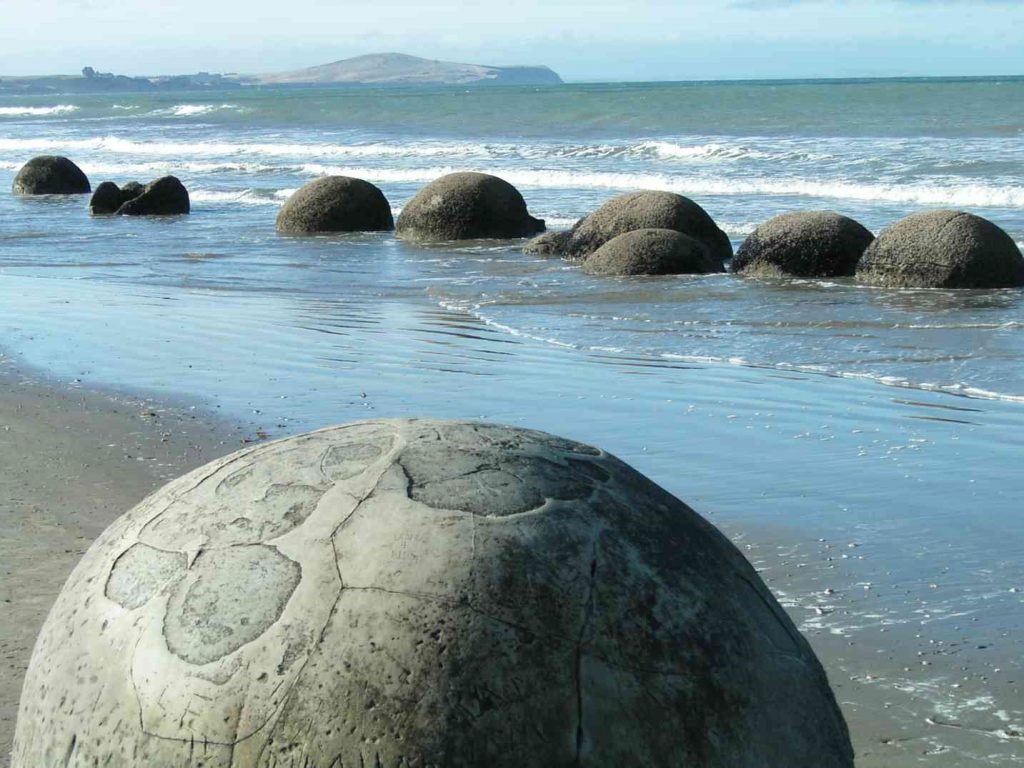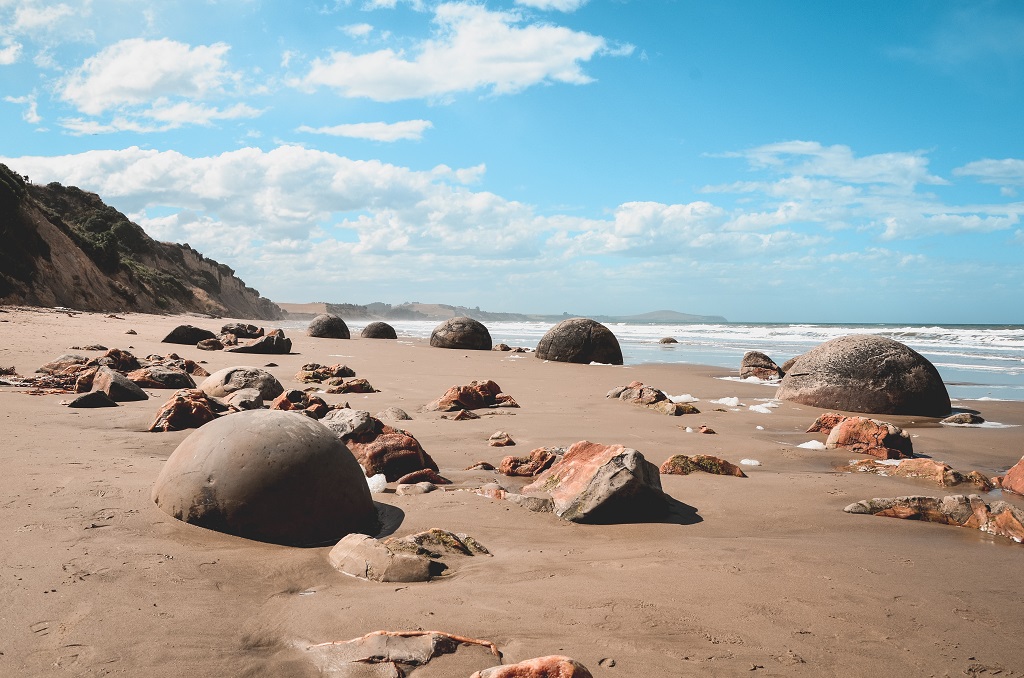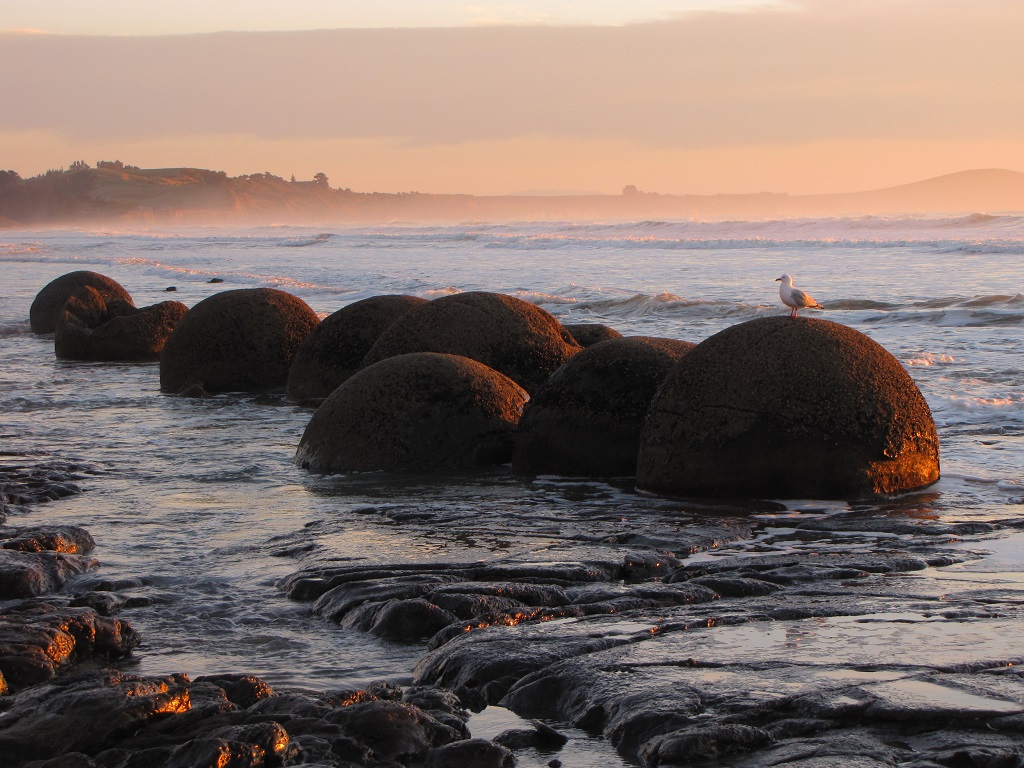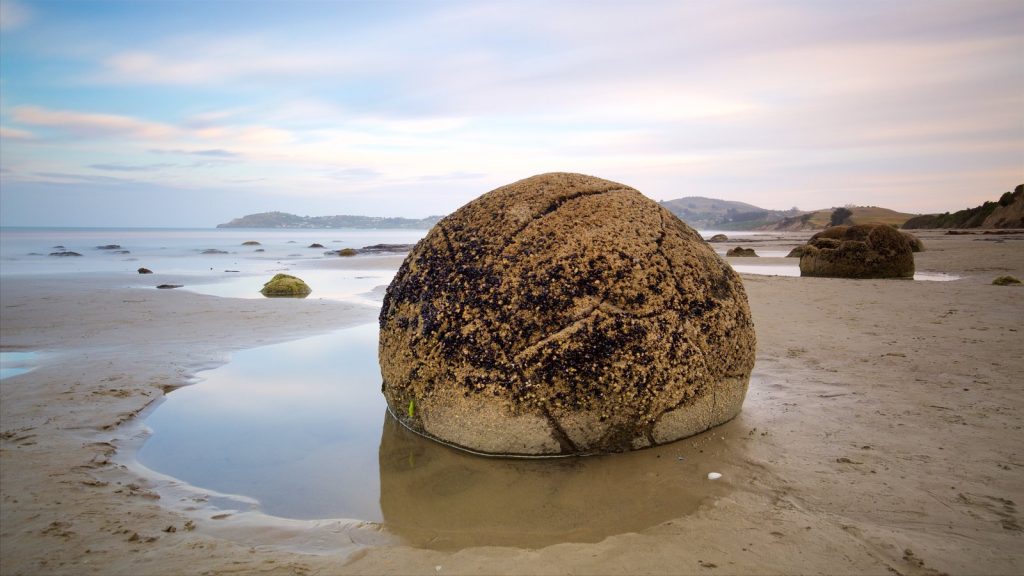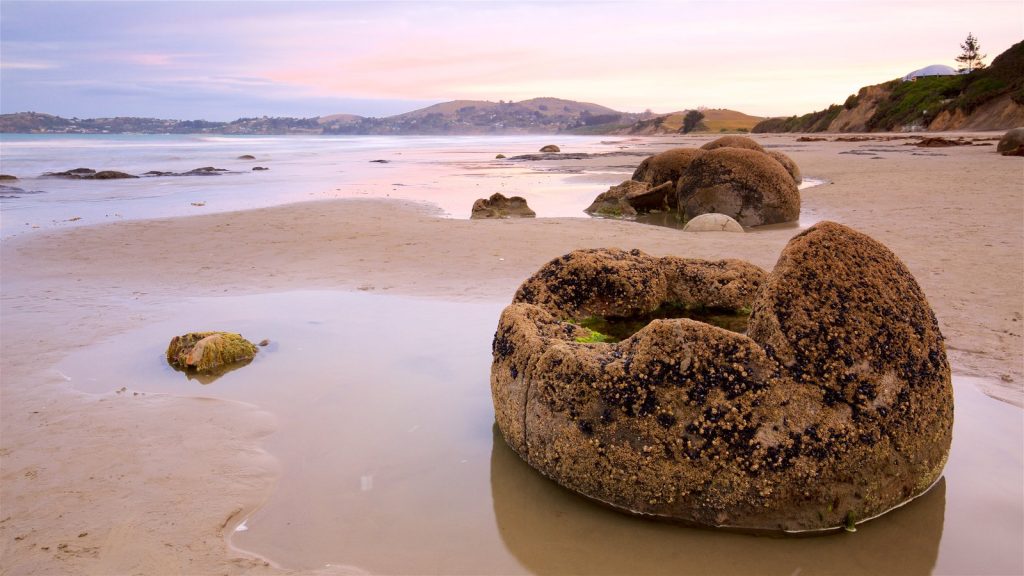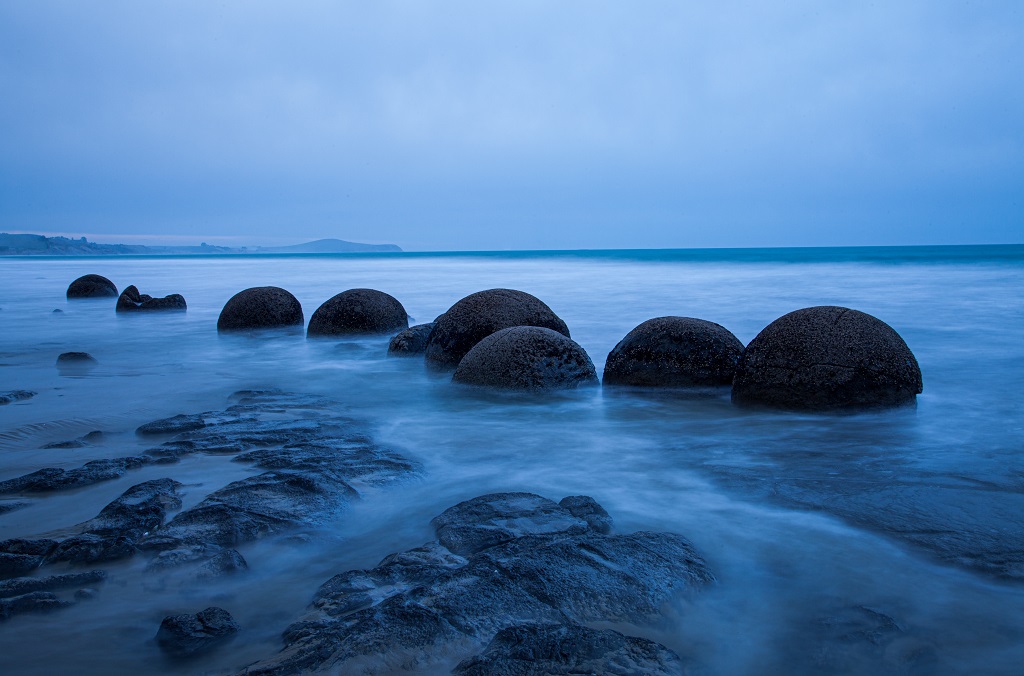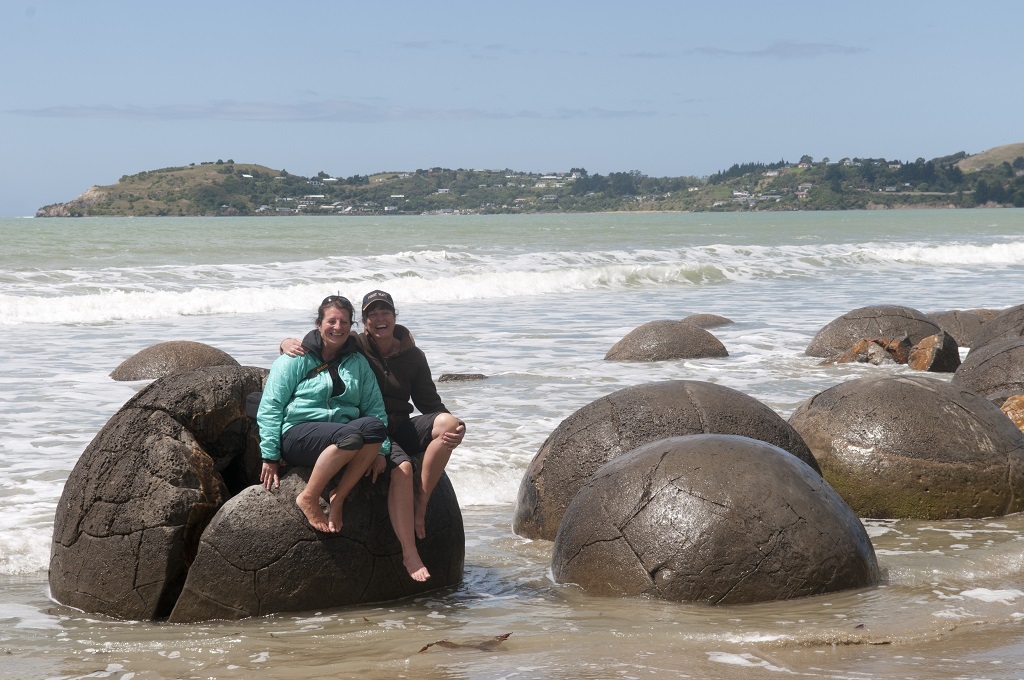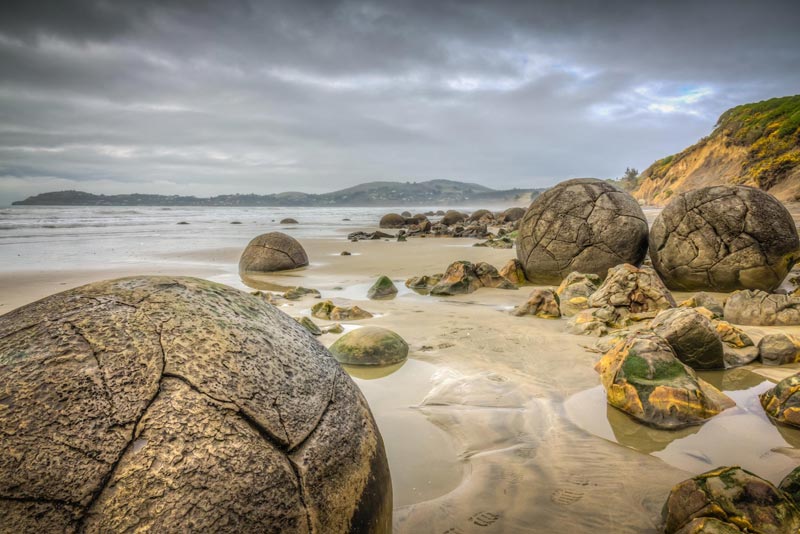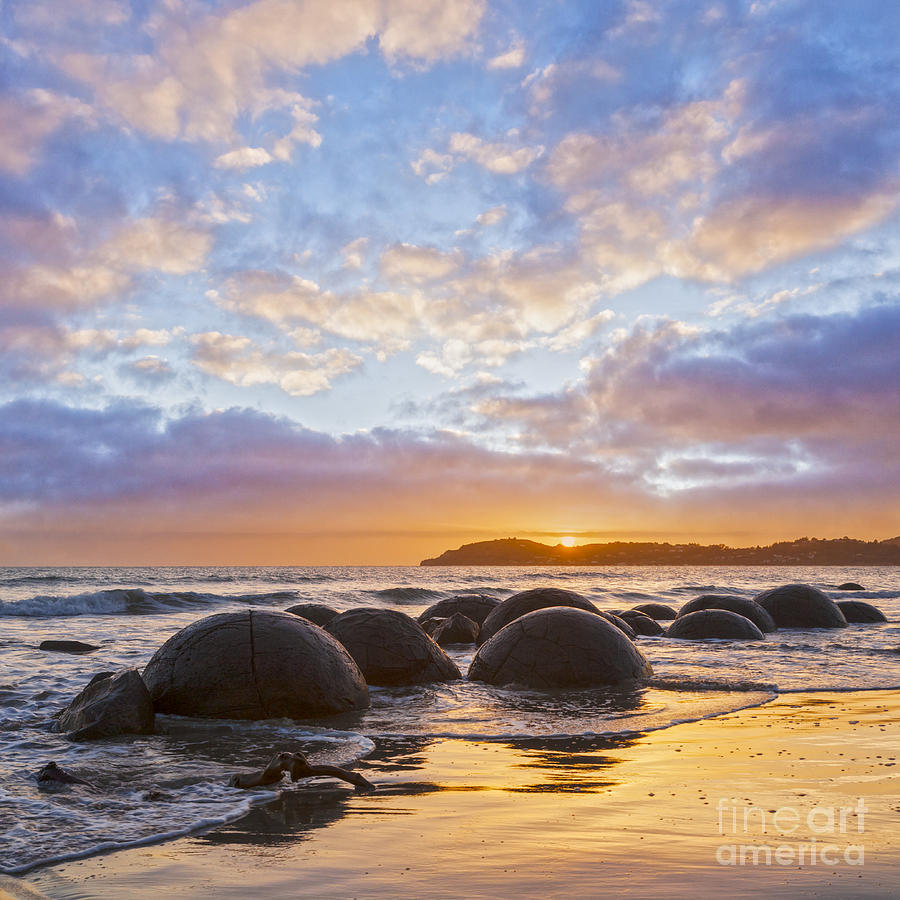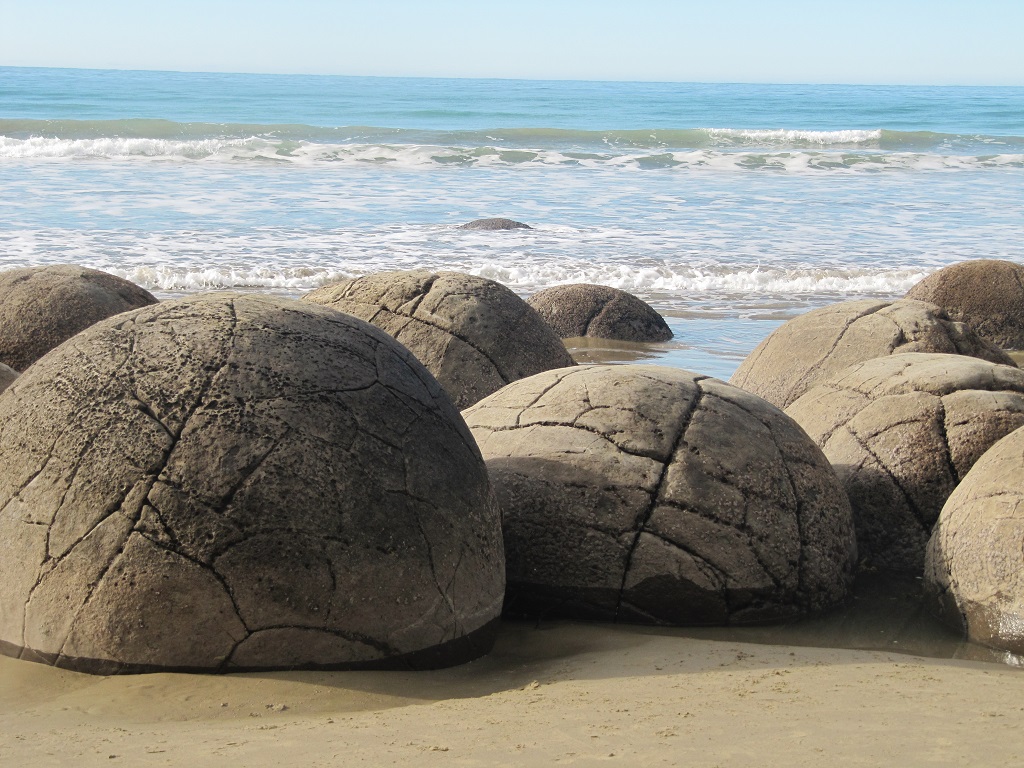Moraki Cobblestone
(Moraki boulder)
In the quiet and tranquil South Island of New Zealand, there is a place called Moeraki on the east coast. Whenever the sea ebbs, you will see more than 50 huge round stones protruding from the sea. They are said to be stones. It is better to say that they are giant stone eggs. It's apt. Its round shape and magical internal structure make everyone who sees these stones have to sigh from the bottom of their hearts.
According to inspections, the formation of these stones came from 4 million years ago. After millions of years of weathering, some have naturally cracked, or the inside is empty, or the very hard fossil mesh structure is clearly shown to people. According to Maori legend, this is the fruit that rolled out when the sailing ship Araiteuru sank on the shore more than a thousand years ago. Later research by scientists believed that these cobblestones formed 65 million years ago.
The reason for the formation of cobblestones: After four million years, these large cobblestones have gradually formed in the seabed sediment mud full of crystallized calcium and carbonate particles.
The erosion of rainwater and waves washed away the ash from the surface layer, exposing the yellow fossil mesh structure. Perhaps more countless round stones were buried deeper in the hills and fell asleep. But how do they form a circle in the deep soil? Or are they flying from a distant place and falling here and buried by the soil?
An archeological conclusion of a university in New Zealand concluded that the seabed organisms combined with the local geological structure gradually formed a chemical reaction and grew into cobblestone. But they also have multiple questions about this conclusion.
